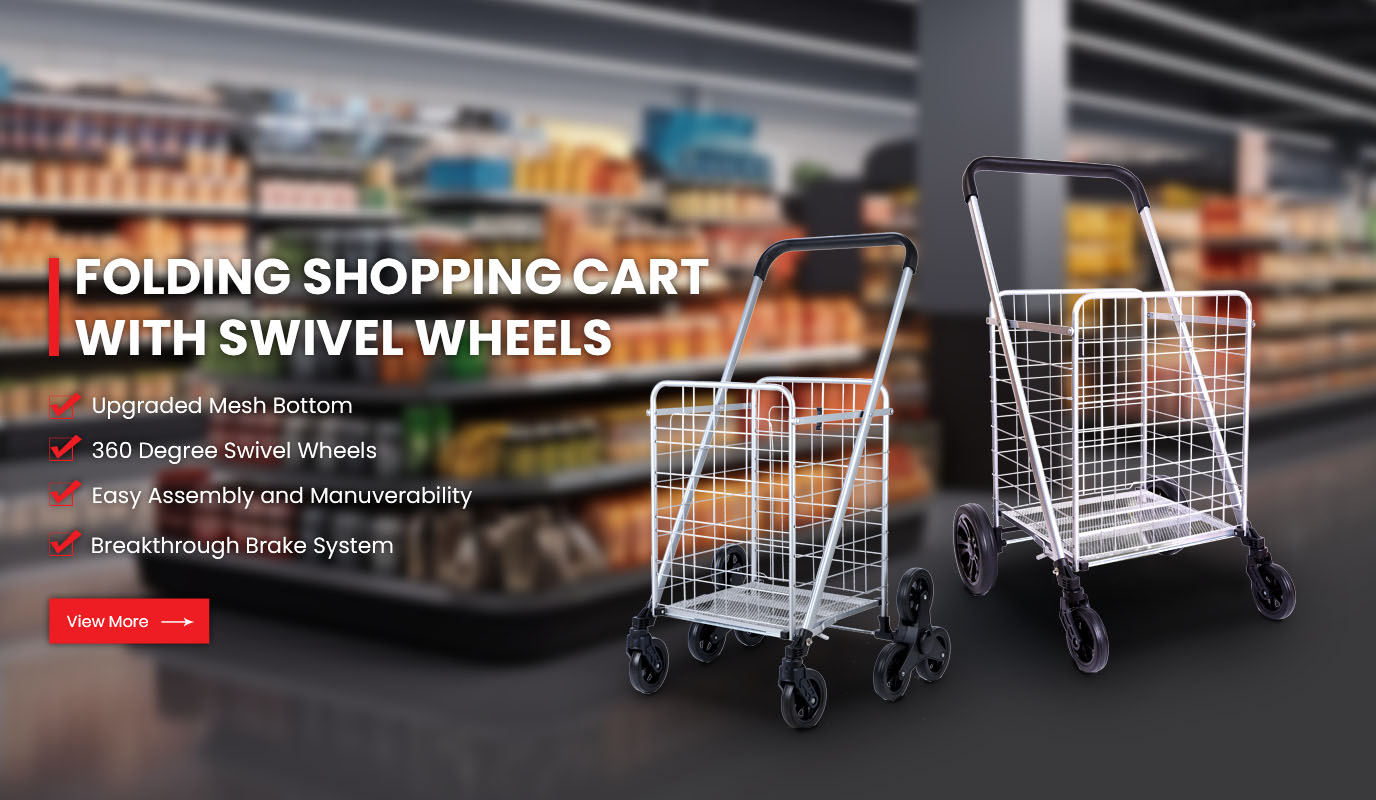Reconstructing The Supply Chain Value With Inventory Management Of Shopping Carts With Wheels
In the field of retail supply chain, the inventory management of high-frequency goods such as small Shopping Carts with wheels is becoming a disaster area for buyers' capital occupation. Under the traditional procurement model, retailers need to prepare goods in advance to cope with demand fluctuations, resulting in high storage costs and capital backlogs. The innovative application of the VMI model is reshaping the circulation logic of such goods. Its core value lies in achieving a breakthrough in "zero inventory capital occupation" through supply chain collaboration.
The capital leverage effect of demand visualization
The core of the VMI model is to transfer inventory decision-making power from buyers to suppliers. Taking shopping carts with wheels as an example, suppliers obtain terminal sales data in real time by connecting to the retailer's POS system. When the number of shopping carts on the shelf is lower than the safety threshold, the system automatically triggers a replenishment instruction. This dynamic replenishment mechanism based on actual consumer behavior increases inventory turnover by more than 40%. After Walmart implemented VMI, the inventory holding cost of shopping carts decreased by 28%, which is the capital liberation effect brought about by demand visualization.
Intelligent compression technology for safety stock
In the traditional model, buyers need to maintain 2-3 weeks of safety stock to cope with supply chain uncertainties. VMI compresses this cycle to less than 48 hours through an algorithmic model. Suppliers use historical sales data to build demand forecasting models and dynamically adjust them in combination with external variables such as weather and holidays. After a home furnishing retailer introduced VMI, the shopping cart inventory was reduced by 65%, and the out-of-stock rate dropped from 3.2% to 0.8%. This precise forecasting capability eliminates the need for buyers to pay additional capital costs for "insurance inventory".
Collaborative optimization of multi-level inventory networks
Under the VMI framework, suppliers establish a collaborative network of regional distribution centers and forward warehouses. Taking wheeled shopping carts as an example, suppliers set up automated stereoscopic warehouses around core cities based on regional sales density. When the system detects a surge in demand in a certain area, the "last mile" delivery can be completed nearby. This distributed inventory layout shortens the average replenishment radius by 50%, which not only reduces logistics costs, but also eliminates the financial pressure of multi-level inventory for buyers.
Innovation of supply chain financial tools
The VMI model has spawned innovative supply chain financial solutions. After obtaining the buyer's historical credit data, suppliers can apply for "inventory pool financing" from financial institutions. Taking the shopping cart with wheels as an example, suppliers use the managed inventory as collateral to obtain low-interest loans for expanding production. Buyers can optimize cash flow by extending the payment period. This financial leverage improves the capital efficiency of both parties by 30%-50%.
Risk-sharing mechanism design
Successful VMI implementation requires the establishment of a risk-sharing mechanism. Taking the shopping cart with wheels as an example, the supplier bears the risk of inventory depreciation, and the buyer guarantees the basic purchase volume. The two parties agree that if the goods are unsalable for more than 180 days, the supplier must repurchase them at a price not less than 85% of the cost price. This "limited commitment" mechanism not only protects the interests of buyers, but also encourages suppliers to improve the accuracy of demand forecasting. After a European retailer adopted this model, the inventory impairment loss of shopping cart products was reduced by 70%.
The VMI model is essentially to replace experience judgment with data intelligence and replace unilateral game with collaborative decision-making. When the inventory decision of the shopping cart with wheels is transferred from the buyer's Excel spreadsheet to the supplier's algorithm system, the dilemma of capital occupation is naturally solved. This supply chain innovation not only releases the cash flow of buyers, but also promotes the evolution of the entire retail ecosystem towards a more efficient direction. In the future, with the popularization of the Internet of Things and blockchain technology, the VMI model will derive more innovative practices that reduce capital occupation and continue to reconstruct the value distribution system of the supply chain.



